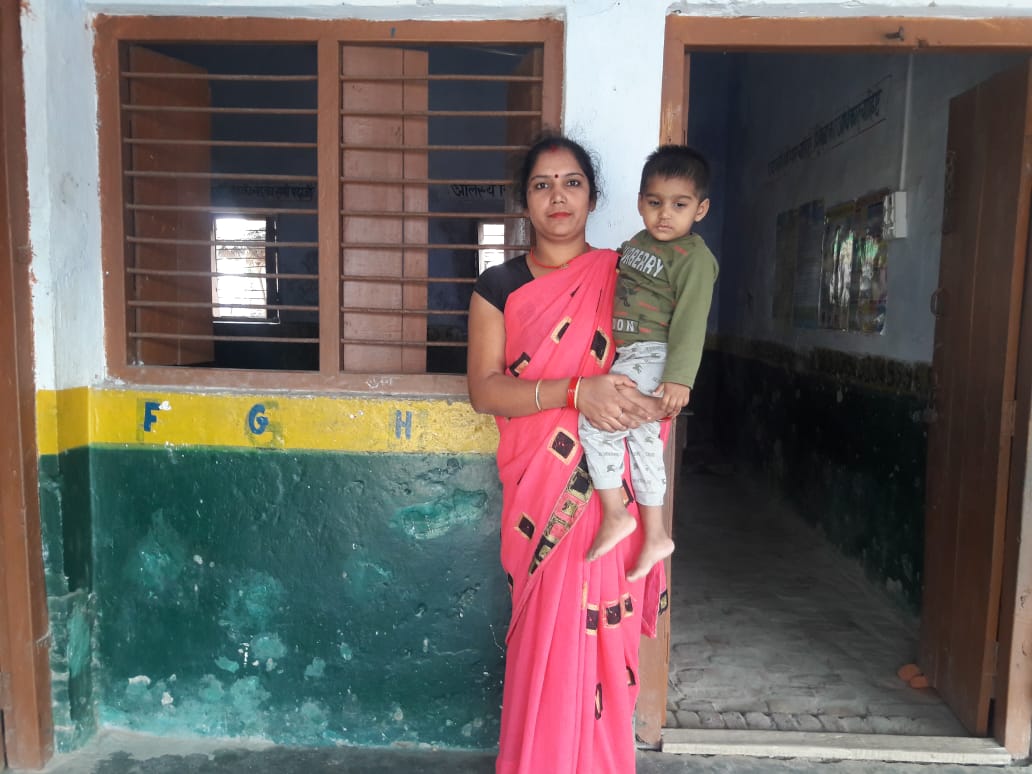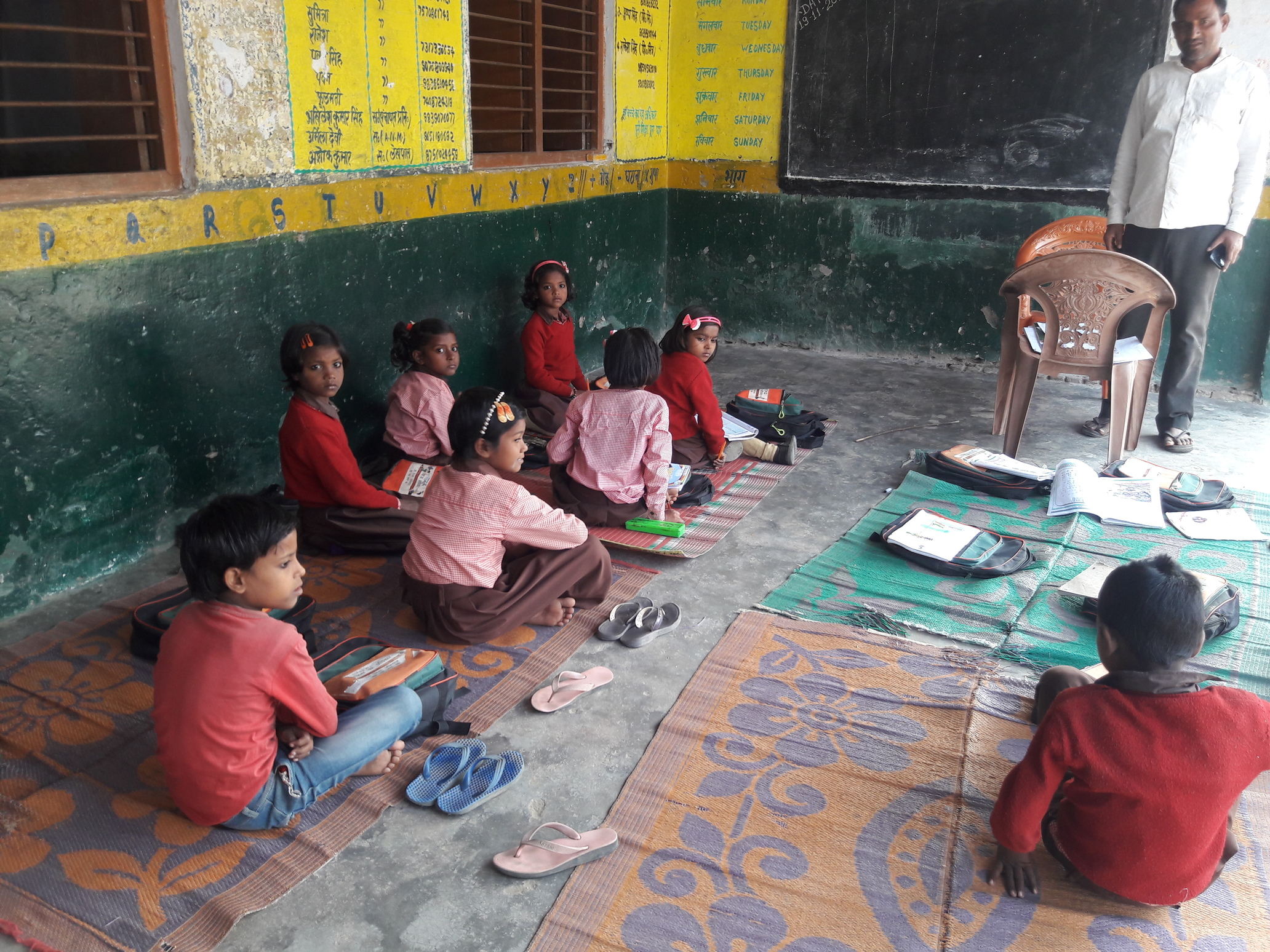A teacher, a mom, and an ideal. Meet this primary school teacher, who wears multiple hats
This is the story of a primary school teacher but with the responsibility of a school with insufficient space and staff. She not only has to teach students, but also has to visit homes of students skipping school


“Logon ko lagta hai ki sarey adhyapak chor hain (it is a general perception that primary school teachers are robbers),” said Rani Priyadarshani, 31, an assistant teacher of a primary school in the Lakoda village of Suratganj block in Uttar Pradesh’s Barabanki district.
A woman, in her early 40s, sitting on a chair, with one leg on the table-top, busy weaving sweaters and sunbathing in the winter afternoons, or one who is capable of teaching nothing, or one who makes students teach their juniors in classrooms, isn’t it how most of us have been picturing a primary school teacher?
This is the story of a primary school teacher but with the responsibility of a school with insufficient space and staff. She not only has to teach students but also has to visit homes of students skipping school.
“My alarm bell rings at three in the morning. And as soon as I wake up, I cook both breakfast and lunch and then dress my children up. I leave home by 7:30 am, so that I can reach school by 9,” said Priyadarshini, who cooks a-two-time food for a family of 11 before leaving for school, which is 45 kms away from her home, a journey made arduous by bad roads. She lives in the Nandura block in Barabanki district in Uttar Pradesh.
“My husband runs a mobile shop. He has to come along with me. He takes care of our children throughout the day until the school bell rings at 3 pm. I reach home by 6-7 pm,” she said. “One day, my neighbour aunt asked me, ‘dulhin ka poora din padhauti ho’? (Do you teach all day?)”
Priyadarshini, along with her colleague Himanshu Verma and two Shiksha Mitras (para-teachers), teaches nearly 124 students of classes 1 to 5 in a small building that is unfit for use. The classrooms’ floors are broken and the ceilings leak.

The school has two rooms, a veranda, and an office. When Priyadarshini joined, the office room was used as a storeroom; classes were conducted in one corner and the mid-day meal was cooked in another; registers in bundles were also kept in the room. “I somehow managed for three months. This building is not fit for use,” said Priyadarshini, adding, “We don’t have a building big enough to keep students in different classes. We take class 3 in the veranda, classes 4 and 5 in one room, and classes 1 and 2 in the other.”
In fact, due to lack of space, the school conducts the morning prayers in the street.
When I asked her how she has been managing students here, she giggled and said: “Bas madamji, yeh samajh lijiye, doodh me se malai nikal li jati hai, to jo bachta hai, chhach, woh hamko banana hai (We are given milk with the cream taken out, and we have to take care of what is left,” Priyadarshini said, giggling.

“Everyone thinks students are not taught at primary schools. But no one understands that there are only two teachers who have to manage the entire school. One of us always gets stuck in maintaining records. There is so much paperwork, yet we take care of both the studies and extracurricular activities of these students,” said Priyadarshini, who manages two classes at a time due to paucity of teachers.
Priyadarshini takes care of classes 4 and 5. “I give questions to class 4, while I give mathematics assignments to class 5. When class 5 is busy solving questions of mathematics, I help students of class 4 with questions and answers,” she added.
The job is not only to teach
Priyadarshini is just an assistant teacher, but she has to take care of all the responsibilities of the school — from arranging mid-day meals for students to visiting homes of who remain absent.
When students skip school for a while, Rani and colleague Himanshu Verma, also an assistant teacher, visit their homes to find out the reason. The question that often parents welcome them with is: “Ka mastarain, tumhre paas aur kono kaam nahin hai? (Teacher, don’t you have any other work?)”

Priyadarshini and Himanshu observe the attendance dip during sowing and harvesting of potatoes. “Of the 124 students enrolled, only 60 have come today. Potato is being sowed in the fields and parents take their kids to fields for work. When we visit them the parents promise us they will send the students the next day, but they don’t,” said Priyadarshini, adding, “They don’t send because working on fields earn a kid Rs 20 per day. For these poor families, education is secondary.”
After classes, they organise ‘the games period’. Priyadarshini lets the students play on a vacant space, which is also the street used by the locals, outside their small school.

“We can’t give them a lot of homework. Rs 3 copy is expensive for parents”
The government provides free books to students but not copies for classwork and homework. According to Section 31of the Right of Children to Free and Compulsory Education Act, 2009, children in schools are entitled to textbooks, uniforms, mid-day meals and play materials.
“A copy (notebook) costs Rs 3. We can’t give the students much homework because their parents wouldn’t buy many copies for them as they cannot afford it. We have to even consider this,” said Priyadarshini.
“Sometimes, we buy copies for these students. We always keep pencils, erasers and copies at our desks and give them to any kid needing them,” said Verma, who carries his personal laptop to school to show students video lessons.
“We have asked officers to put four blank pages after every lesson in the textbook. This will reduce the burden for parents. They would then not have to buy copies for students. And a kid would be able to take notes when a lesson is taught,” he added.
“We don’t have a projector. We download videos on our mobiles and show them to the students. It is easy for students to visualise things and learn then,” said Priyadarshini.

A teacher, a mom, and an ideal
“When we ask kids what they want to become in future, they say they want to be like their ma’am,” said Verma, as Priyadarsini giggled. “Some of them want to become doctors and some teachers. They want to become what they see. The exposure is less. Kids don’t know much about the other professions,” added Verma.
Priyadarshini has two children — Sarika Gupta, 4 and Shrishthi Gupta, 2. Her husband, Manish Kumar, drives all of them to the school and also brings them home every day. Rani’s two little kids also play with the students at her school. Rani has to carry both of them to the school. Although her husband, who remains at school campus and looks after their kids till her wife remains working at school, looks after them when she would be busy taking classes, her youngest son came running to her, all confused and crying, when we were interviewing her. She lift him up, giggled, and then left to check classrooms.

